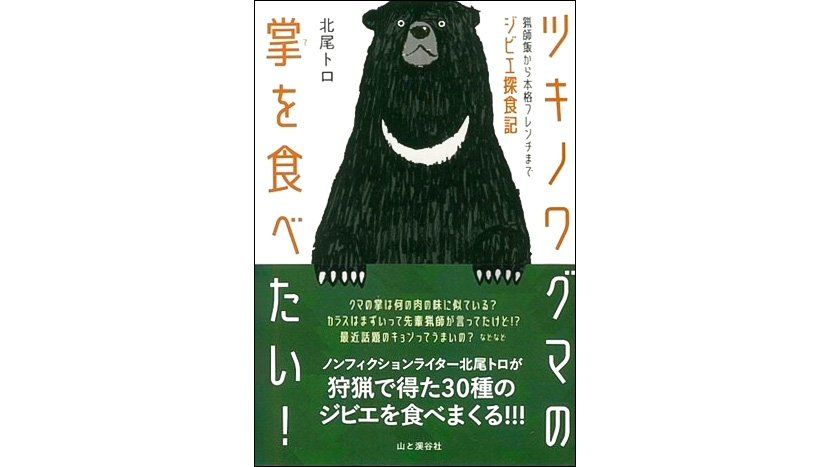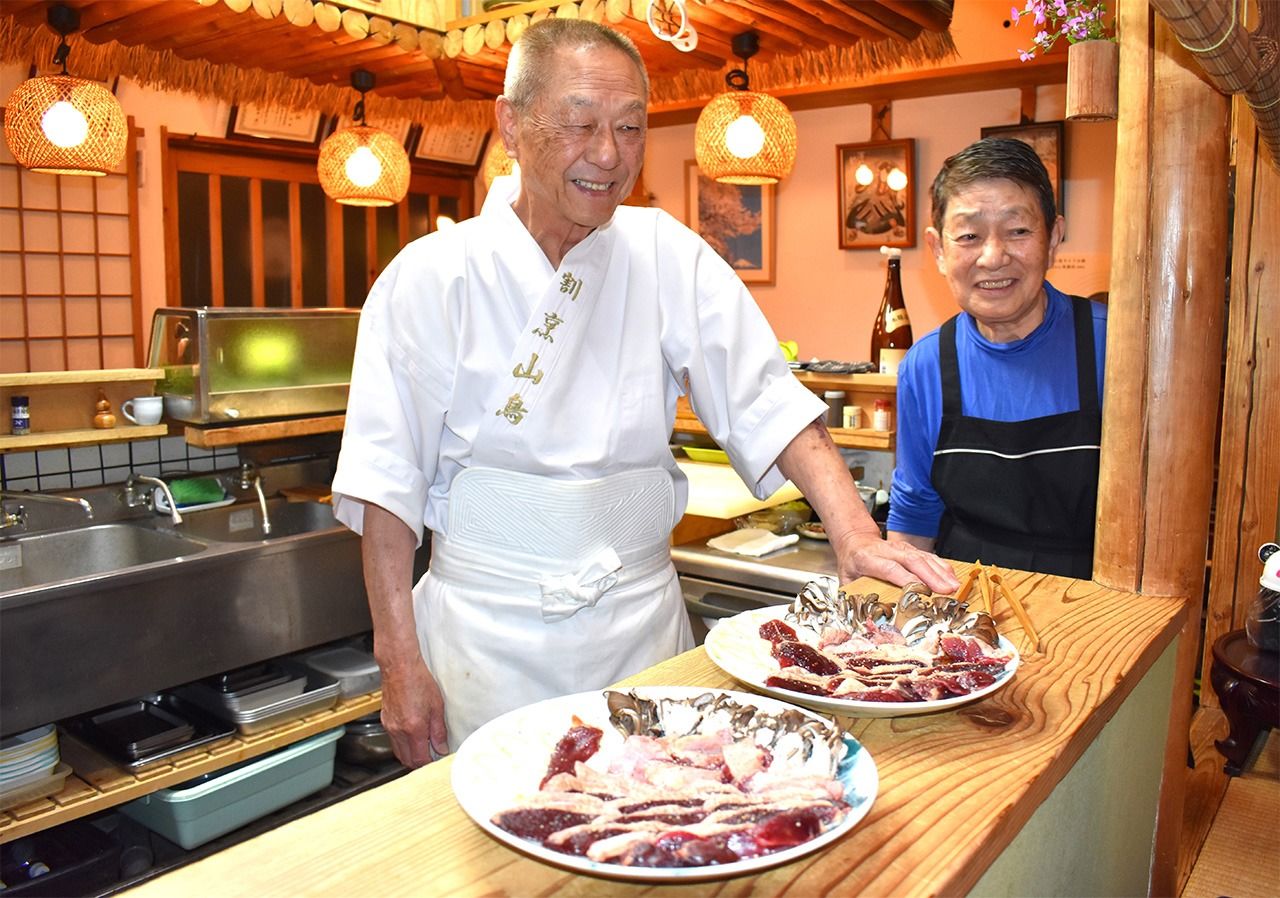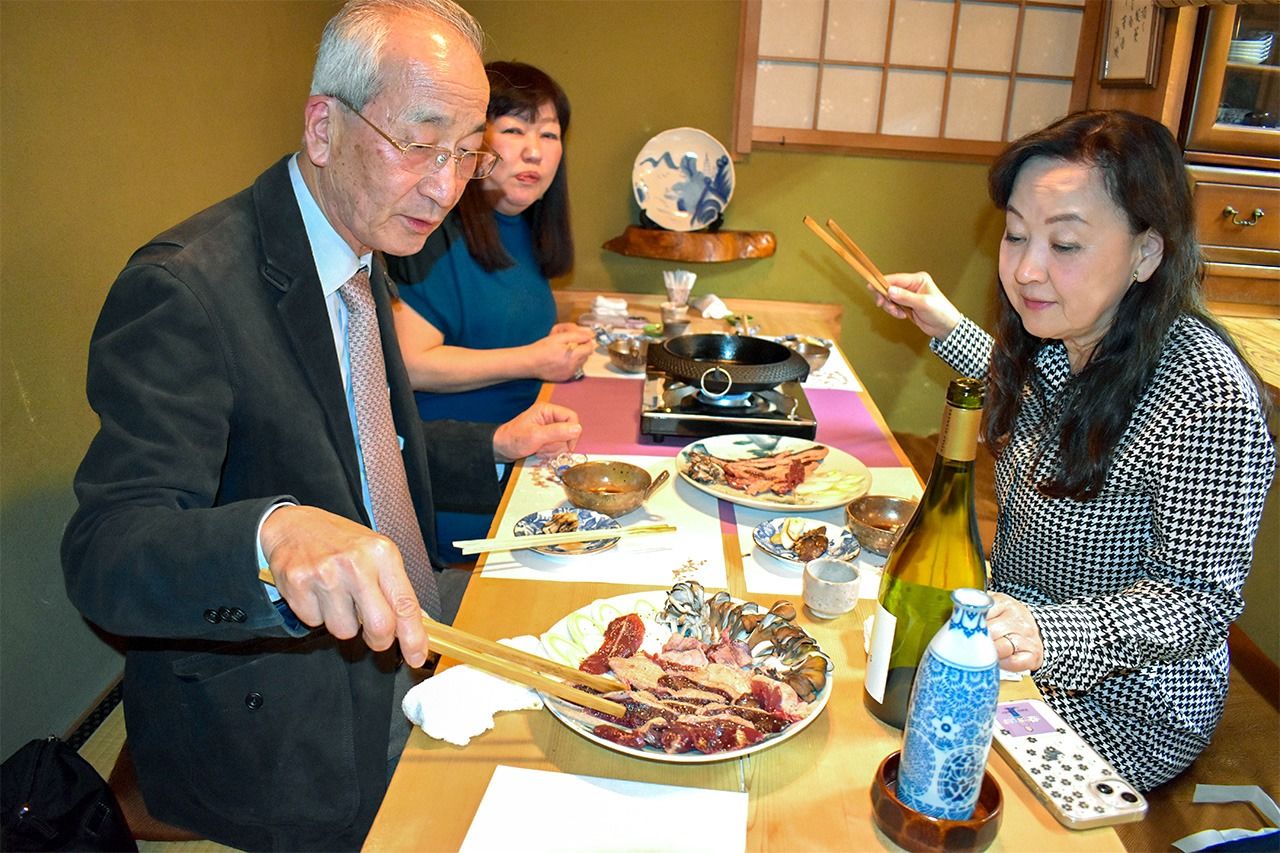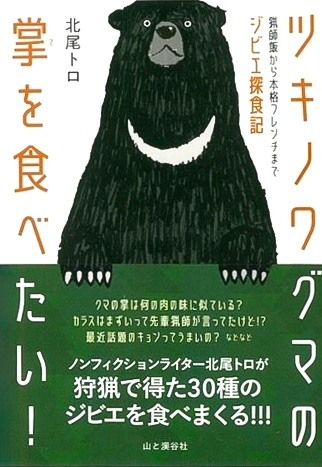
On the Hunt for High Cuisine: New Book Explores Japan’s Wild Game Scene
Books Food and Drink- English
- 日本語
- 简体字
- 繁體字
- Français
- Español
- العربية
- Русский
Tales of Wild Eating
In Japan, wild game is often referred to as jibie, borrowed from the French term gibier. Europe’s aristocracy hunted and dined on game for centuries. In Japan, traditions of hunting game include the matagi hunters in mountainous regions of Tōhoku, in northern Honshū.
The nonfiction author Kitao Toro was born in 1958 in Fukuoka Prefecture and has been a licensed hunter since 2013. As a “hunter-writer,” he has made it his mission to try as many varieties of game as he could.
Over the years, he has tasted copper pheasant, the “king” of wild fowl, as well as green pheasant, mallard duck, jungle crow, eastern turtle dove, great cormorant, hazel grouse, and other birds. In addition, he has tried deer, boar, and more exotic species, such as tanuki, fox, masked palm civet, common raccoon, and Japanese hare. In total, he has eaten over 30 types of game and, at times, has butchered and cooked it himself. He recounts these experiences, with photos, in his 2024 book Tsukinowaguma no te o tabetai! (I Want to Eat Bear Paw!).
Introducing a Hunter-Restaurateur
“Hunting fowl with an air gun by day, French chef by night!” Such is the introduction of Kobayashi Masakazu, owner of Restro Rin, in the city of Matsumoto, Nagano. Kitao describes a typical day in the life of the restaurateur, who wakes up at 6:00 in the morning, is out hunting an hour later, and returns home well before noon.
Following breakfast, he heads for his restaurant to prepare for lunch. He takes a short rest after lunch before starting preparations for dinner. After the evening shift, he cleans up, comes home around midnight, and finally goes to bed at 2:00 am. Even on his days off he can generally be found in the forest, hunting for game. Kobayashi describes his hunter-restaurateur lifestyle as “crazy.”
Japan has seen a rise in restaurants offering game in recent years. Examples in Kitao’s book include Rakuraku, in Kokonoe, Ōita, and Niku no Suzukiya, in Iida, Nagano.
One sign of the increase in the number of game restaurants was the publication of Shefu to bishoku-ka no tame no jibie gaido (A Guide to Wild Game for Chefs and Foodies) in April 2024. The book lists 147 game restaurants around Japan, including older restaurants and newcomers. There are even entries for hunter/chef-owned establishments in urban areas like Tokyo and Chiba.
But there are other, more intimate, long-running restaurants specializing in Japanese game that the book does not mention. They include Takajō Kotobuki, in Taitō, Tokyo, and Yanagiya, in Mizunami, Gifu, both of which I have visited. The couple who owns Yamadori, in Nagoya’s Nishi Ward, even use hunting dogs.

Husband and wife team Hattori Osamu and Machiko, the owners of Yamadori, have hunting licenses and travel outside of Aichi Prefecture during the hunting season (November 15 to February 15). Photo taken on April 10, 2024, in Nishi Ward, Nagoya. (© Izumi Nobumichi)
Bear Paw: Delicacy of the Chinese Imperial Court
The ultimate experience described by Kitao is his first taste of bear paw. It was considered a delicacy of China’s Qing dynasty (1644–1912), at the pinnacle of Manchu and Han Chinese cuisine.
The dish was prepared for him by his shooting mentor, Miyazawa Yukio, owner of the ramen diner Hacchin, in Nagano, the capital of Nagano Prefecture. He is considered a gibier meister, with over 40 years’ experience as a hunter, and even longer as a chef. Miyazawa prepared Asian black bear (moon bear) paw supplied by the hunter who took the animal. Kitao describes his impressions of the whole simmered paw served to him.
It was cooked whole, with only the claws and bones removed, and therefore retained its paw shape. The light soy sauce-based seasoning allowed Kitao to savor the taste of the bear meat itself. When he cut into the paw, he discovered that it was more than just a gelatinous block—in fact, there was substantial meat. When eaten together, the springy texture of the sinews and the tender meat was a perfect combination. With the aroma of star anise, it was undeniably delectable. But when asked how it actually tasted, Kitao can only say that it was unlike anything he had ever tried before.
Harmful Species and Rural Communities on the Brink
One reason that game has attracted attention is the issue of harmful species. According to Japan’s Ministry of Agriculture, Forestry, and Fisheries, wild fauna such as deer, boars, monkeys, and crows caused ¥15.6 billion in damage to agricultural crops in fiscal 2022; such creatures damage around 5,000 hectares of forest each year. In terms of aquatic produce, the growing number of great cormorants has been reported as impacting catches of ayu, or river sweetfish.
When these pests are culled, rather than letting the meat go to waste, there is a movement toward using it for gibier cuisine. Kitao also believes that profits from the meat sold can also help revitalize rural communities. Supplying high-quality meat can help regions gain a reputation for the product, enhancing their “brand.” He applauds efforts that see pests as a resource instead of just a problem to eradicate.

A regular customer grills mallard caught and frozen by the Hattoris on April 10, 2024, at Yamadori. (© Izumi Nobumichi)
Kitao claims that with the ever-present need to reduce pest species, gibier cuisine is more than just a passing fad. But the number of licensed hunters in Japan has fallen from 500,000 in 1975 to around 210,000 in 2019, and 60% of them are now aged over 60.
Data from the Ministry of the Environment shows that 720,000 deer and 590,000 boars were caught in 2022 (of which, respectively, 150,000 and 100,000 were hunted). Yet a mere 10% of these animals were processed and sold for human consumption—most of the meat taken still goes to waste.
Kitao believes when we capture or hunt wild animals, we should give thanks for the life we take. The United Nations’ Sustainable Development Goals also recommend the use of game for more than just consumption by humans and their pets. Fukuoka Fujiko (also known as Gibier Fujiko) is the president of Karijo no Kai, the Association of Women Hunters, a group that tans deer and boar skin for use in leather goods such as bags and purses.
This is one example of the new potential offered by a Japanese gibier industry. Kitao hopes that the influx of visitors to Japan following the pandemic may also be impressed by the nation’s wilder offerings.
Tsukinowaguma no te o tabetai! Ryōshi meshi kara honkaku Furenchi made jibie tanshoku-ki (I Want to Eat Bear Paw! Tales of Wild Game from Hunter’s Meals to Authentic French Cuisine)
By Kitao Toro
Published by Yama-Kei Publishers in 2024
ISBN: 978-4-635-81024-1
(Originally written in Japanese. Banner photo: The cover of Tsukinowaguma no te o tabetai! Courtesy of Yama-Kei Publishers.)


